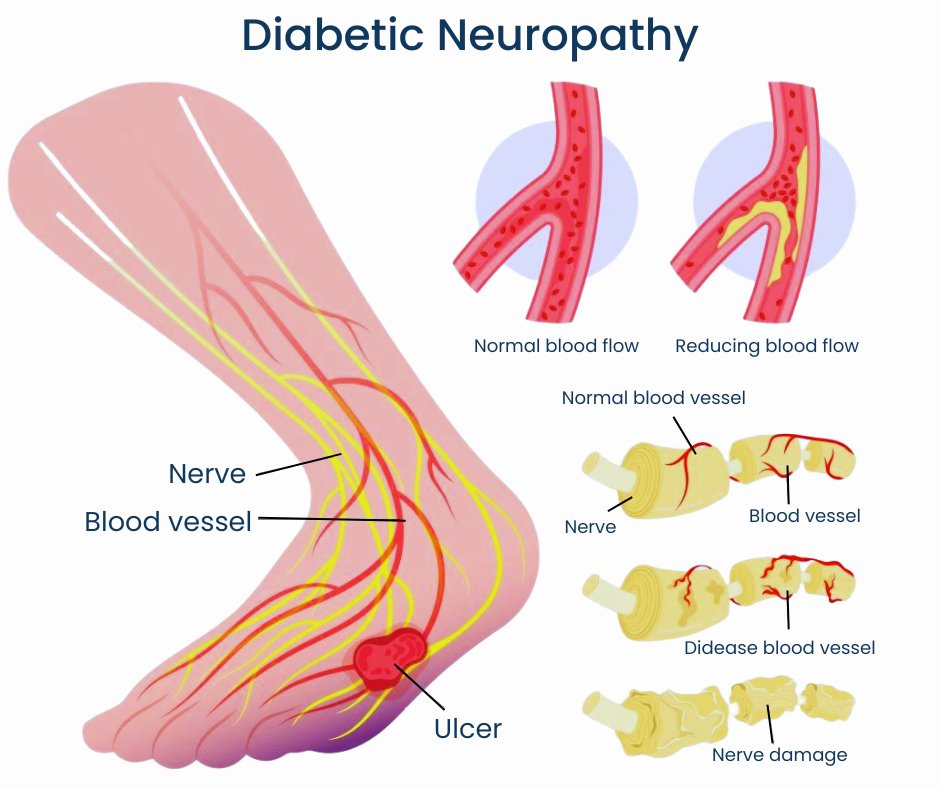A Fresh Dawn in Neuropathy: Looking into State-of-the-Art Techniques to Healing
Peripheral neuropathy, a condition impacting millions across the globe, has historically presented a significant challenge for patients and their families and medical practitioners. Traditionally associated with diabetes, chemotherapy, and multiple autoimmune diseases, this debilitating and painful condition disrupts neurological function, resulting in pain, loss of sensation, and muscle weakness. Nonetheless, new breakthroughs in healthcare research are illuminating novel methods that have the potential to reshape the landscape of nerve pain care.
In this new era of healing, scientists and clinicians are exploring various advanced therapies that address the underlying mechanisms of nerve damage. From innovative regenerative medicine techniques to novel pharmacological interventions, the potential for better results is brighter than ever. As we explore these exciting developments, we reveal the hope that lies at the forefront of neuropathy care, offering patients an opportunity for relief and healing.
Understanding Peripheral Nerve Damage
Neuropathy denotes a variety of conditions that arise due to damage to the nerves outside the brain and spinal cord, which are essential for sending signals between the central nervous system and the rest of the body. This injury can interfere with communication between the brain and muscles, leading to weakness, numbness, and pain, primarily in the hands and feet. Multiple factors can contribute to neuropathy, including high blood sugar, infections, hereditary conditions, and physical injuries.
The symptoms of neuropathy can change widely depending on the kind of nervous tissue involved. Motor nerves may lead to muscle weakness, while sensory nerves can cause reduced ability to detect discomfort or temperature changes. Involuntary nerves, which regulate involuntary bodily functions, can cause issues like digestive problems and heart-related issues. Comprehending the specific kind of neuropathy is important for focused therapy.
New research has emphasized the challenges of neuropathy, shedding insight into how it influences individuals in unique ways. Innovations in diagnostic techniques are opening doors to more precise assessments, allowing healthcare providers to adapt interventions more efficiently. With advancements in medical science, there is increasing optimism about creating new therapies that could alleviate symptoms and enhance the well-being for those living with this issue.
Cutting-edge Therapy Methods
New advancements in nerve disorder treatment have created opportunities novel therapies that aim to lessen pain and rehabilitate function. One such strategy is the use of regenerative medicine, including cell-based treatment. Researchers are studying the possibility of stem cells to heal wounded nerve tissues, promoting healing and possibly undoing the effects of neuropathy. Clinical trials are underway to assess the success of these treatments, paving the way for a future where nerve damage may not be a chronic condition.
Another promising avenue involves the application of neuromodulation techniques. These strategies, which include invasive brain stimulation and TENS, aim to alter nerve activity in a way that reduces pain perception. By aiming at specific nerve pathways involved in the sensation of pain, patients can experience significant relief. The non-invasive nature of these treatments makes them desirable as well, allowing for a more comfortable experience compared to traditional surgical options.

Additionally, advancements in drug therapy are helping to the control of neuropathy. New classes of medications, such as nerve growth factor inhibitors and novel opioids, are being developed to address pain more successfully while minimizing side effects. Precision medicine approaches are also coming into play, enabling tailored treatment plans based on individual genetic profiles. This specificity in treatment may lead to enhanced outcomes and improved quality of life for those afflicted by neuropathy.
Future Paths in Neuropathy Care
As advances, the outlook of neuropathy care looks bright due to the rise of tailored medicine approaches. Through utilizing genetic and molecular profiling, healthcare providers can customize therapies to individual patients, enhancing efficacy and reducing side effects. This patient-centered approach not only improves the quality of care and also addresses the underlying causes of nerve issues, rather than simply managing the symptoms.
An promising path involves the combination of emerging technologies, such as augmented reality and artificial intelligence, within neuropathy treatment strategies. neuropathy doctor can offer creative therapies for pain management and recovery, offering an engaging setting for patients to work on motor skills and sensory coordination. Meanwhile, AI can aid in predicting nerve condition progression and treatment responses, allowing for more proactive and informed decision-making by medical providers.
In addition, the investigation of restorative medicine has significant promise for neuropathy treatment, with stem-cell therapy leading the charge. Researchers are exploring the use of stem cells to repair nerve damage and regain function in affected areas. This progressive approach could transform how nerve issues is treated, offering patients an opportunity for recovery and improved quality of life through novel and effective interventions.